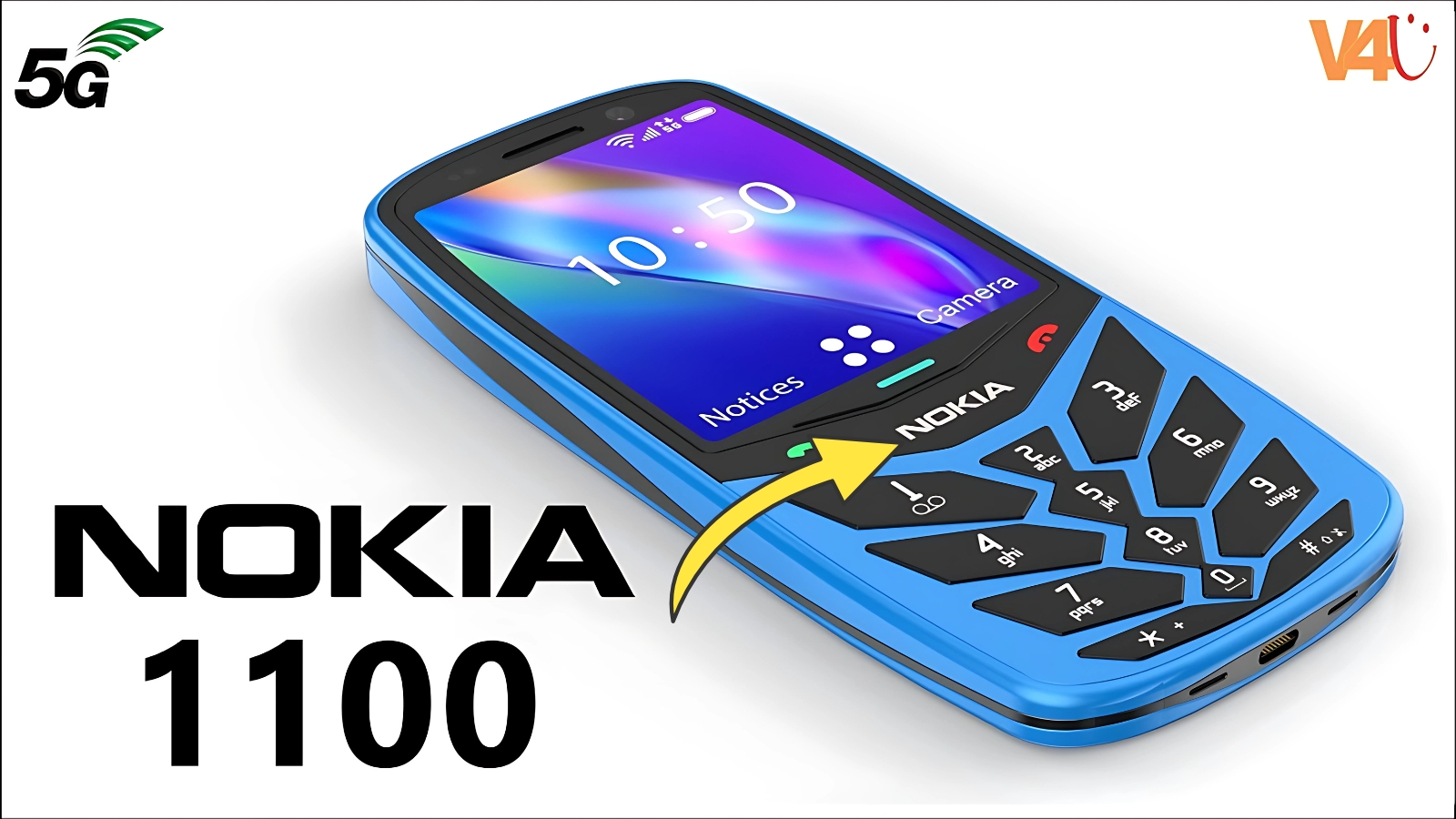Nokia 1100 : The Nokia 1100 stands as an extraordinary testament to how simplicity and reliability can create unprecedented success in technology history. Announced in August 2003 and discontinued in 2010, this basic GSM mobile phone achieved remarkable commercial triumph by selling over 250 million units worldwide, earning recognition as the best-selling mobile phone of all time. The device demonstrated that thoughtful design focusing on essential functionality could resonate globally, particularly in developing markets where durability and affordability took precedence over advanced features.
Design Philosophy and Global Market Strategy
Nokia specifically designed the 1100 for first-time mobile users in emerging markets including Russia, India, China, Africa, the Middle East, and Asia-Pacific regions. The company aimed to bring “the benefits of mobility to consumers in new-growth markets” through practical, simple, and economically accessible mobile communication. This strategic positioning reflected Nokia’s understanding that global mobile adoption required devices tailored to diverse economic conditions and user requirements.
The phone’s physical design prioritized durability and functionality over aesthetic appeal. Measuring approximately candy bar dimensions and weighing just 93 grams, the device achieved optimal portability while maintaining robust construction. The compact form factor ensured comfortable handling across diverse user demographics while supporting extended usage scenarios without fatigue.(Nokia 1100)
Color options included light blue, orange, black, dark blue, yellow, red, green, and pink variants through Nokia’s Xpress-On cover system, enabling personalization while maintaining cost-effectiveness. This modular approach allowed users to customize appearance without requiring entirely new devices, supporting both economic accessibility and individual expression preferences.
Hardware Specifications and Technical Excellence
The technical foundation emphasized functionality over sophistication through carefully selected components. The device featured a 96×65 pixel monochrome display that provided adequate visibility while minimizing power consumption and manufacturing costs. This display technology ensured excellent readability across various lighting conditions while extending battery life significantly compared to more advanced alternatives.
The Nokia BL-5C battery delivered exceptional performance characteristics, providing up to 400 hours standby time and 4.5 hours talk time on single charges. This remarkable battery efficiency resulted from the device’s minimal power requirements, enabling extended usage periods that exceeded user expectations and reduced charging frequency anxiety.
Memory capacity accommodated 50 contacts with customizable ringtones and icons, plus 50 SMS messages in inbox and drafts folders with 25 additional sent message storage. This storage allocation provided adequate capacity for typical communication needs while maintaining system responsiveness and data organization capabilities.

Feature Set and Practical Innovation
The 1100 incorporated thoughtful features that enhanced daily usability without increasing complexity unnecessarily. The built-in flashlight, activated by pressing and holding the C key, provided practical illumination functionality rare in mobile devices at the time. This feature demonstrated Nokia’s attention to real-world usage scenarios where additional light sources proved valuable.
Entertainment options included classic games Snake II and Space Impact+, providing engaging distraction during idle moments while maintaining the device’s primary communication focus. These games became cultural phenomena, introducing mobile gaming concepts to millions of first-time users worldwide.
Additional functionality encompassed alarm clock, stopwatch, calculator, ringtone composer, and six customizable profiles enabling different notification settings for various scenarios. The ringtone composer allowed users to create personalized monophonic melodies, fostering creative expression within the device’s technical limitations.
Environmental and Durability Considerations
Nokia engineered the 1100 specifically for challenging environmental conditions common in developing markets. The keypad and front face received dust-proof design treatment, while non-slip sides ensured reliable handling during humid weather conditions. These design considerations addressed practical concerns about device reliability in diverse climatic conditions.
The modular construction philosophy enabled component replacement rather than complete device disposal, supporting both economic sustainability and environmental responsibility. Users could purchase replacement covers, keypads, and batteries, extending device lifespan while reducing electronic waste generation.
Construction materials prioritized durability over premium aesthetics, resulting in devices capable of withstanding significant physical stress. Legendary stories emerged about 1100 units surviving extreme conditions, including documented cases of phones deflecting bullets and operating after severe physical trauma.
Market Impact and Cultural Significance
The 1100’s commercial success fundamentally altered mobile phone market perceptions about emerging market potential. Nokia’s achievement demonstrated that carefully designed basic devices could generate massive sales volumes while establishing brand loyalty across diverse geographic regions.
Sales milestones included Nokia’s one billionth phone sold being a 1100 purchased in Nigeria, symbolizing the device’s role in global mobile communication democratization. By 2008, total sales reached 250 million units across all variants, establishing unprecedented commercial success for any consumer electronics product.
The device influenced industry approaches to emerging market product development, proving that simplified, affordable technology could achieve greater commercial impact than premium feature-rich alternatives. This success inspired competitors to develop similar basic devices targeting price-sensitive market segments.
Asus ZenFone 10 – New features launch with 128GB internal storage
Security Concerns and Technical Legacy
In 2009, security issues emerged regarding specific 1100 variants manufactured in Bochum, Germany. Firmware vulnerabilities potentially enabled message interception capabilities, leading to some units selling for over $32,000 on illicit markets for fraud purposes. These incidents highlighted the device’s continued relevance and the importance of secure mobile communication systems.
Despite security concerns, the 1100’s fundamental design principles influenced subsequent mobile device development. The emphasis on battery life, durability, and essential functionality informed later Nokia models and competitor products targeting similar market segments.
Nokia 1100 : Contemporary Relevance and Nostalgic Appeal
Modern interest in the Nokia 1100 reflects growing appreciation for simplified technology solutions amid smartphone complexity saturation. Reports indicate renewed demand for basic mobile phones, with global sales reaching one billion units in 2020, demonstrating enduring appeal for uncomplicated communication devices.
The 1100 represents a pivotal moment in mobile technology history when essential functionality triumphed over feature proliferation, creating a legacy that continues influencing contemporary device design philosophy and market strategy considerations worldwide.